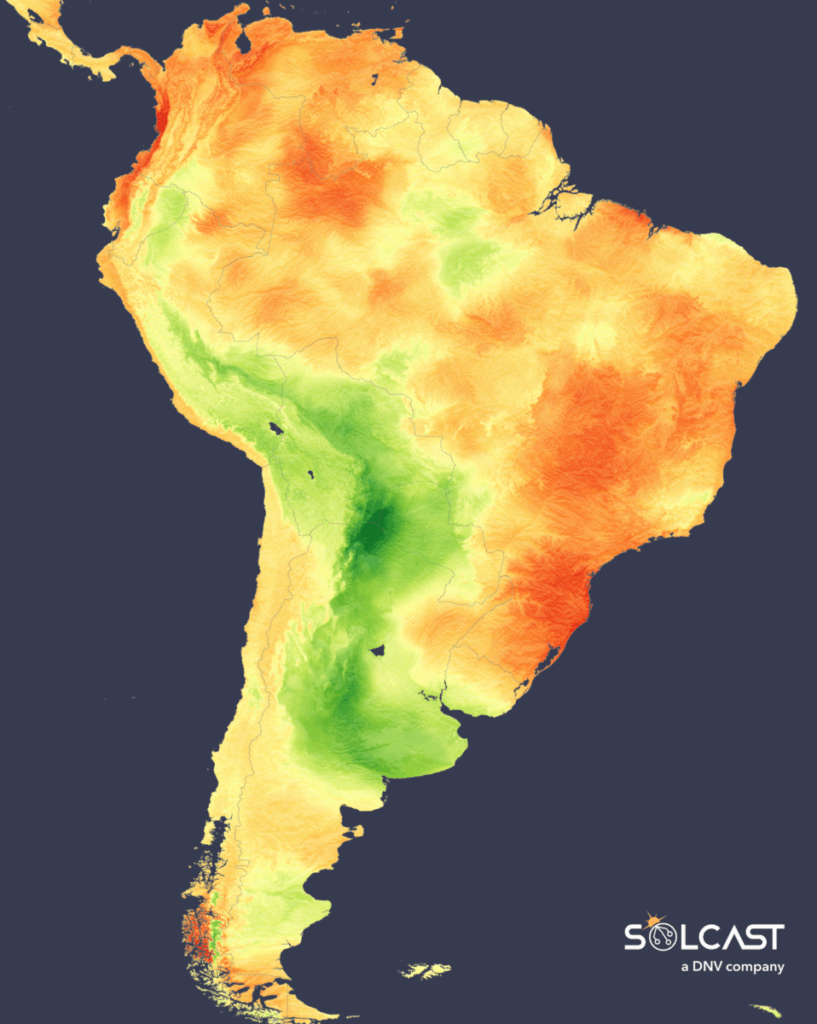In a new weekly update for PV -MagazineSolcast, a DNV company, reports that South Brazil and the Northern Andes were radiation hot spots in March and placed anomalies as high as 30% above the climatic average. The increase came despite intense rainfall that caused floods in other parts of South America.
March in South America supplied well above the average irradiation for solar producers in the solar-tight southeastern states in Brazil. The majority of Brazil, in addition to North -South America, benefited from increased radiation, despite persistent convective rain systems that dump above the average rainfall in the Amazon. In the meantime, the Andes saw in Argentina and the Atacama desert in Chile reduced irradiation, according to analysis using the Solcast APIWhile high pressure over the southern Atlantic Ocean pulled damp air from the east of the continent.
South Brazil and the Northern Andes stood out in March as hotspots of radiation and placed deviations up to 30% above the climatic average. This boost took place despite intense above -average rainfall that led to floods in Bolivia, Argentina and Brazil. High rainfall normally means reduced irradiation, but in this case a pronounced ridge of high pressure settled over East Brazil that oppressed long -term cloud covering despite recurring convective rainstorm activity. This setup supported sporadic but intense rain, interspersed with long -term periods of sunshine. Although it is abnormal to see positive irradiation and rainfall abnormalities at the same time, the graph below shows an example week with sunny mornings and afternoon cloud, which leads to rain late on the day or at night.
Further north, the Caribbean States also benefited from the same influence, with stable air masses that limit cloud development and push irradiation above March averages. Mild temperatures and similarly raised precipitation were observed in these areas, although a lack of persistent cloud -enhanced solar generation.
In stark contrast, solar conditions were unfavorable about the Andes and adjacent lowlands. Increased temperatures of the sea surface temperatures in the South Atlantic Ocean raised the moisture transport to the west over the continent, linging cloud to the mountains. This air mass came to a middle to top level trough over the Andes, which destabilized the atmosphere and promoted the persistent, deeply convective cloud cover all month.
The resulting impact on radiation was considerable. From the north of Argentina by Paraguay, Bolivia and in Central Peru, cloud-tight conditions dominated. The irradiation in this zone fell up to 30% from climatic averages. This persistent lack of solar energy exposure is an important deviation from seasonal expectations for these typically well-performing sun areas.
Dissolved Produces these figures by following clouds and aerosols with a resolution of 1-2 km worldwide, with the help of satellite data and own Ai/ml -algorithms. This data is used to stimulate radiation models, so Solcast is able to calculate the radiation at high resolution, with a typical distortion of less than 2%, and also cloud-tracking predictions. This data is used by more than 350 companies that manage more than 300 GW of solar assets worldwide.
The views and opinions expressed in this article are the author, and do not necessarily reflect it by PV -Magazine.
This content is protected by copyright and may not be reused. If you want to work with us and reuse part of our content, please contact: editors@pv-magazine.com.
Popular content




